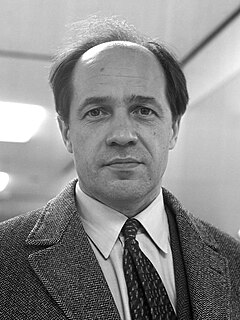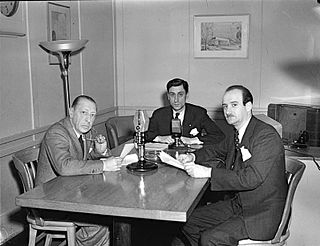Related Research Articles
Religion and mythology differ in scope but have overlapping aspects. Both terms refer to systems of concepts that are of high importance to a certain community, making statements concerning the supernatural or sacred. Generally, mythology is considered one component or aspect of religion. Religion is the broader term: besides mythological aspects, it includes aspects of ritual, morality, theology, and mystical experience. A given mythology is almost always associated with a certain religion such as Greek mythology with Ancient Greek religion. Disconnected from its religious system, a myth may lose its immediate relevance to the community and evolve—away from sacred importance—into a legend or folktale.

In music, a cadenza is, generically, an improvised or written-out ornamental passage played or sung by a soloist or soloists, usually in a "free" rhythmic style, and often allowing virtuosic display. During this time the accompaniment will rest, or sustain a note or chord. Thus an improvised cadenza is indicated in written notation by a fermata in all parts. A cadenza will usually occur over the final or penultimate note in a piece, the lead-in or over the final or penultimate note in an important subsection of a piece. It can also be found before a final coda or ritornello.

The Allegory of the Cave, or Plato's Cave, is an allegory presented by the Greek philosopher Plato in his work Republic (514a–520a) to compare "the effect of education and the lack of it on our nature". It is written as a dialogue between Plato's brother Glaucon and his mentor Socrates, narrated by the latter. The allegory is presented after the analogy of the sun (508b–509c) and the analogy of the divided line (509d–511e).

Pli selon pli is a piece of classical music by the French composer Pierre Boulez. It carries the subtitle Portrait de Mallarmé. It is scored for a solo soprano and orchestra and uses the texts of three sonnets of French symbolist poet Stéphane Mallarmé and single lines from two of his other poems. At over an hour, it is Boulez's longest work.

In philosophy, Plato's epistemology is a theory of knowledge developed by the Greek philosopher Plato and his followers.

Evan Ziporyn is an American composer of post-minimalist music with a cross-cultural orientation, drawing equally from classical music, avant-garde, various world music traditions, and jazz. Ziporyn has composed for a wide range of ensembles, including symphony orchestras, wind ensembles, many types of chamber groups, and solo works, sometimes involving electronics. Balinese gamelan, for which he has composed numerous works, has compositions. He is known for his solo performances on clarinet and bass clarinet; additionally, Ziporyn plays gender wayang and other Balinese instruments, saxophones, piano & keyboards, EWI, and Shona mbira.

In music, a ninth is a compound interval consisting of an octave plus a second.
Ned Rorem is an American composer and diarist. He won a Pulitzer Prize for Music in 1976 for his Air Music: Ten Etudes for Orchestra.

Timothy "Tim" George Hodgkinson is an English experimental music composer and performer, principally on reeds, lap steel guitar, and keyboards. He first became known as one of the core members of the British avant-rock group Henry Cow, which he formed with Fred Frith in 1968. After the demise of Henry Cow, he participated in numerous bands and projects, eventually concentrating on composing contemporary music and performing as an improviser.

The Symphony in Three Movements is a work by Russian expatriate composer Igor Stravinsky. Stravinsky wrote the symphony from 1942–45 on commission by the Philharmonic Symphony Society of New York. It was premièred by the New York Philharmonic Orchestra under Stravinsky on January 24, 1946.
Charles Camilleri was a Maltese composer.

The Te Deum by Hector Berlioz (1803–1869) was completed in 1849. Like the earlier and more famous Grande Messe des Morts, it is one of the works referred to by Berlioz in his Memoirs as "the enormous compositions which some critics have called architectural or monumental music." While the orchestral forces required for the Te Deum are not as titanic as those of the Requiem, the work calls for an organ that can compete on equal terms with the rest of the orchestra. It lasts approximately fifty minutes and derives its text from the traditional Latin Te Deum, although Berlioz changed the word order for dramatic purposes.

Yitzhak Yedid is an Israeli-Australian contemporary classical music composer and improvising pianist.

Abatte Barihun is an Israeli jazz saxophonist and composer. His sound is reminiscent of John Coltrane's, who has highly influenced Barihun.
Erich Urbanner is an Austrian composer and teacher.
Allan Rae is a Canadian composer, conductor, and trumpeter based in Calgary, Alberta. An associate and former board member of the Canadian Music Centre and a member of the Canadian League of Composers, he is particularly known for his works for the theatre which include several musicals and operas as well as incidental music. He has been commissioned to write music for productions mounted by the National Arts Centre, the Shaw Festival, and the Stratford Festival, as well as Theatre Passe Muraille, Vancouver Playhouse, Theatre Calgary, and the Globe Theatre, Regina. Between 1985 and 2000 he was composer-in-residence at Alberta Theatre Projects.

The Nirvana Upanishad is an ancient sutra-style Sanskrit text and a minor Upanishad of Hinduism. The text is attached to the Rig Veda, and is one of the 20 Sannyasa (renunciation) Upanishads. It is a short text and notable for its distilled, aphoristic presentation with metaphors and allegories.